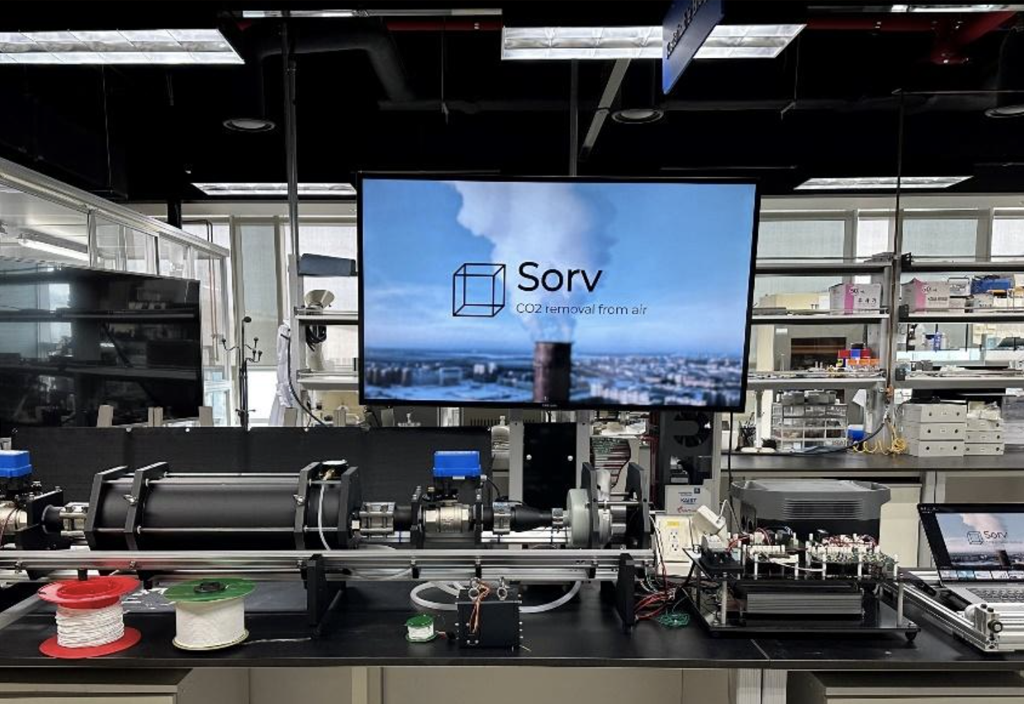Direct Air Capture (DAC) technology has emerged as a pivotal solution in the fight against climate change, offering the potential for negative CO2 emissions. By selectively removing CO2 from the air, even at minimal concentrations, DAC presents a promising avenue for future CO2 utilization or sequestration. However, the journey to successful DAC deployment is riddled with challenges, including the need to reduce the pressure drop, maximize CO2 sorption, and optimize regeneration, all while ensuring scalability and cost-effectiveness. Prof. Dong-Yeun Koh’s team has developed and demonstrated “electrified direct air capture” in conjunction with renewable electricity, further improving the energy-efficiency of DAC operation.
Historically, researchers have focused on solid sorbents, which capture CO2 through chemical or physical interactions. These sorbents, especially in post-laboratory scale production, have shown the potential of DAC technology in addressing negative CO2 emissions. Platforms such as monoliths or fiber sorbents have been developed to treat large volumes of ambient air, ensuring scalability of the system. Yet, despite these advancements, the energy-efficient regeneration of sorbents remains a significant challenge.
The conventional method for solid sorbent desorption is temperature swing adsorption (TSA). In TSA, CO2-saturated sorbents are heated to their desorption temperatures, typically using superheated steam or scavenged heat from point sources. However, this method is geographically restrictive, as the TSA cycle operations are bound to the heat source’s location. Given the omnipresence of CO2 in the atmosphere, a more flexible DAC module is essential, one that is not limited by location.
Enter electrified fiber sorbents, a groundbreaking solution proposed by Prof. Koh’s team. By ingeniously implanting a Joule heating copper wire in the center of the fibers, the team introduced a fiber sorbent contactor with in-situ conductive Joule heating capabilities. This design leverages electricity as the primary heat source, ensuring direct and uniform heating with minimal heat loss. Moreover, it offers freedom from location-based constraints, even allowing for the possibility of using renewable energy sources for sorbent regeneration.
The team’s research does not stop at the theoretical level. They have successfully demonstrated a bench scale module capable of capturing an impressive 0.3 tpy of CO2. This module, with its unique fiber sorbent contactor design, provides a glimpse into the future of plant-scale DAC deployments. The electrically connected fiber sorbent bobbins can be produced semi-continuously, hinting at the scalability of this innovation. The team has founded a spin-off venture called “Sorv” for rapid prototyping of the products and further commercialization of the e-DAC units in larger scale plants.
Backed by rigorous technoeconomic analysis modeling and comprehensive data analysis, the team’s vision is clear: to transition from the current state to a multi-metric-ton scale CO2 plant. This ambition, if realized, will mark a significant leap towards achieving the dream of “negative emissions.”
In conclusion, “Electrified Fiber Sorbent for Energy-Efficient Direct Air Capture” is more than just a research paper; it is a beacon of hope in the quest to combat climate change. It has been recognized with a prestigious RD100 Award and selected as one of the finalists for the 2023 award. The team previously was awarded the Grand Prize from the KAIST Lab Startup program in 2022. This work is a testament to the power of innovation and the relentless pursuit of a sustainable future.

Prof. Dong-Yeun Koh Department of Chemical and Biomolecular Engineering, KAIST
E-mail: dongyeunkoh@kaist.ac.kr
Homepage: https://mmml.kaist.ac.kr






